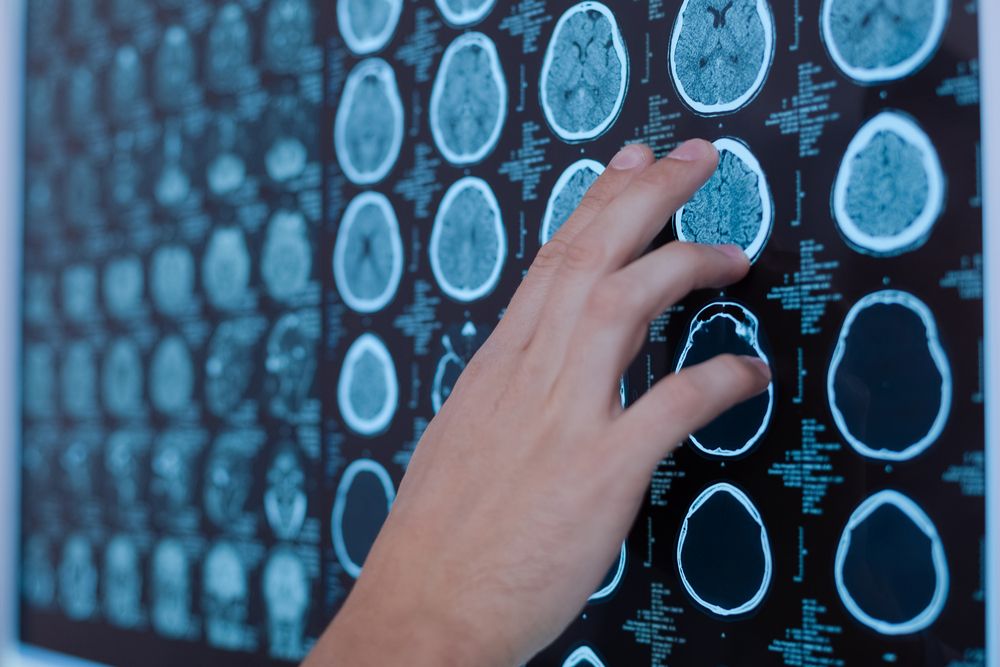Nerve Tissue Scarring May Explain MS Progression

Dmytro Zinkevych/Shutterstock
Nerve tissue scars associated with multiple sclerosis (MS) show marked differences from those of similar neurodegenerative disorders, according to a recent study.
MS-associated inflammation causes brain and spinal cord lesions (nerve tissue scarring) that often are bigger and last longer than those of two other demyelinating diseases: myelin oligodendrocyte glycoprotein antibody associated disorder (MOGAD), and aquaporin-4 antibody positive neuromyelitis optica spectrum disorder (AQP4-NMOSD).
According to the study’s authors, this may explain why MS patients develop progressive disability, while patients with the two other disorders do not.
“The differences in scarring that we found will help physicians distinguish these three diseases more easily to aid in diagnosis,” Eoin Flanagan, a Mayo Clinic neurologist and senior author of the study, said in a press release.
“More importantly,” Flanagan continued, “our findings improve our understanding of the mechanisms of nerve damage in these three diseases and may suggest an important role of such scars in the development of long-term disability in MS.”
The study, “Comparison of MRI Lesion Evolution in Different Central Nervous System Demyelinating Disorders,” was published in the journal Neurology.
The three disorders — MOGAD, AQP4-NMOSD, and MS — all involve
inflammation that leads to the loss of myelin, the insulating protein found wrapped around neurons. Only MS, however, features progressively increasing disability.
Understanding the difference between these disorders could shed light on more effective therapies.
In search of answers, a team led by researchers at the Mayo Clinic in Rochester, Minnesota, reviewed patient records pertaining to all three disorders, looking for what set the scars (lesions) apart in each disorder. Specifically, they examined whether inflammation led to scarring, and whether scarring might explain disability progression in MS compared to the other conditions.
The team identified 156 patients, 67 of whom had MS, 51 had AQP4-NMOSD, and 38 MOGAD. All together, these patients accounted for 172 attacks or relapses.
Researchers found that demyelinating lesions in MOGAD tended to resolve completely, despite often being of large size and accompanying acutely severe impairment. This observation is in line with the favorable long-term outcome reported in most MOGAD patients.
Lesions associated with AQP4-NMOSD, in contrast, appeared similar in size and symptom severity to those seen in MOGAD, but rarely resolved completely. Despite large reductions in size over time, small scar regions remained visible by MRI. These results “are consistent with the incomplete recovery and step-wise attack-related disability accumulation reported in” AQP4-NMOSD patients, the researchers wrote.
Finally, MS-associated lesions were comparatively smaller and accompanied less-severe attacks. Areas of inflammation, however, decreased only moderately and rarely resolved completely, even after symptoms of an attack had disappeared.
The reasons behind these differences remain unclear, but the researchers speculated the persistent lesions seen in MS, especially when present in critical locations of the brain and spinal cord (such as regions that control limb muscles) may serve as focal points for disability progression.
Scars associated with AQP4-NMOSD, for instance, tended not to occur in such critical locations.
“The tendency of some MS lesions to remain chronically active between relapses (smoldering MS lesions) could support this hypothesis,” the researchers wrote.
Furthermore, the study identified differences in treatments that could have implications for how well lesions resolve. The team noted, for instance, that a relatively small proportion of MS patients received anti-CD20 therapies, such as Ocrevus (ocrelizumab) and Kesimpta (ofatumumab), although these might be more beneficial in terms of MS lesion resolution.
“Future studies will better clarify the specific impact of different acute and maintenance immunosuppressive agents (e.g., anti-CD20 versus oral immunosuppressants … versus MS disease-modifying agents) on MRI lesion evolution,” they wrote.
Overall, “our study highlights the importance of the currently available MS medications that very effectively can prevent attacks, new lesions and subsequent scar formation” said Elia Sechi, MD, the study’s first author.
According to the team, the study also has “implications for diagnosis, monitoring disease activity, and clinical trial design, while also providing insight into pathogenesis of central nervous system demyelinating diseases.”







